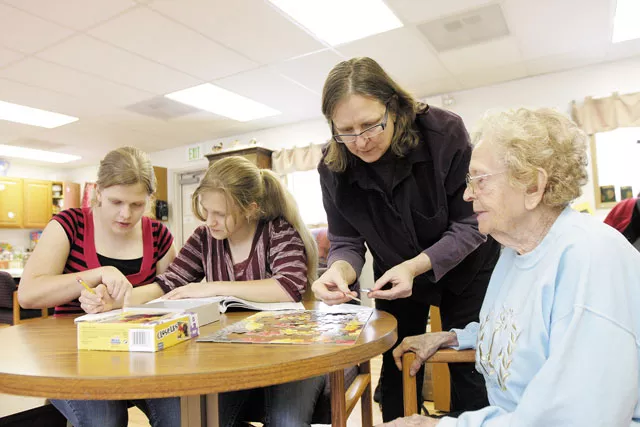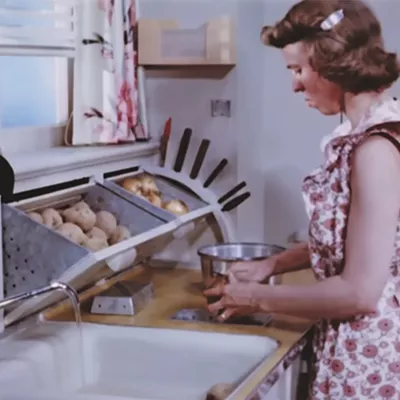
The metaphor has been around for many years now, but these days, more and more people are finding out just what it means to be a member of the “Sandwich Generation.”
For those who don’t know, let’s start here: It’s not the kind of sandwich everyone loves, the eating kind. This “sandwich” is comprised of three or more people. The person in the middle is the caregiver and the two pieces of “bread” are their loved ones.
This sandwich is about taking care of others.
“It’s an adult child caring for their children, usually still in the home, and caring for an aging parent,” says Becky Tiller, of Tiller Care Strategies in Spokane. Tiller didn’t coin the phrase, but she is well-versed in its meaning, the challenges it poses and the strategies for managing such a situation.
And it does take managing because the person in the middle — the primary caregiver — can feel squeezed and (to stretch the metaphor further) end up feeling like lunch meat.
“It means that you’re juggling a lot of balls in the air,” Tiller says. “It’s difficult enough being a parent. And, then, when you throw your aging parent in there, too, that can be very challenging.” Among other services, Tiller’s agency provides guidance for people who find themselves in the sandwich.
Sandwich Generation actually became an official entry in the Merriam-Webster Dictionary in 2006: “A generation of people who are caring for their aging parents while supporting their own children.”
The concept, though, began to gain widespread acceptance in the late ‘80s and early ‘90s, when more and more Baby Boomers (people born from the mid-1940s to the mid-1960s) found themselves taking care of their own kids and their parents at the same time. According to Pam Sloan, of Spokane’s Elder Services organization, “The PEW Research Center relates that one of every eight Americans, age 40 to 60, is both raising a child and caring for a parent.”
Often, there are financial reasons that precipitate this new family structure: an aging parent can’t afford a mortgage, a college graduate child can’t get a job, or any number of other possibilities.
“The dollar isn’t going as far, a lot of people can’t afford to stay in assisted-living facilities,” says Tiller. “I think we’re going to see more of this kind of The Waltons scenario.” She pauses. “But not everybody has those good family dynamics,” she adds with a laugh.
But Renee Rinderknecht and her family are proving that the Sandwich Generation script doesn’t have to be a tension-filled drama. In her situation, it wasn’t so much a financial decision as a philosophy that led to their family becoming members of the Sandwich Generation. Rinderknecht and her husband have twin teenage daughters and, now, a new member of the household: Rinderknecht’s 93-year-old mother, Dorothy.
Dorothy was living at home alone in Iowa last year, and it was becoming clear to her and everyone else she could use a little help.
“I am totally, totally happy” with the arrangement, says Rinderknecht, who teaches full-time in the Mead School District.
While Rinderknecht likes — no, loves — having her mom with her, she does admit it creates challenges. “It’s managing a lot of schedules,” she says. “When my mom’s home, who’s going to be there? And the 14-year-olds, they have a very busy life, too. I’m still working, my husband is still working. How do you provide for all the needs?” she asks — rhetorically, because in their case, it’s working.
Rinderknecht says it is important that her mother isn’t left alone. That can simply mean one of the kids gets up early to be downstairs with their grandmother in the morning. For her part, Dorothy expresses immense gratitude for the watchful company (and love) her family provides.
“I really appreciate it because I’m not able to do everything anymore, but I can do some things,” she says.
“She’s definitely part of the operation around the house,” says Rinderknecht. “The other day she was giving me a foot rub, my daughters were studying Chinese on the couch, my husband was downstairs doing remodeling, and then my mom cleared the table and put food away.”
Perhaps Rinderknecht’s family can serve as proof, or at the very least, hope, that a Sandwich Generation situation can be managed successfully.
Because, says Tiller, “More often than not, the adult child finds themselves in a [Sandwich Generation] situation and says, ‘Oh, how did I get into this?’ What we can do as professionals is point them in the right direction and give them strategies to manage their situation.”
Tiller says the No. 1 key to success is for the caregiver to make sure they don’t neglect caring for themselves. “One of the biggest complaints is they don’t have any time to themselves,” says Tiller. “It doesn’t have to be something major. Sometimes they just want peace and want to be in their own homes.”
“I absolutely agree it can be a challenge, because you have so many things to do and more responsibility can creep in and swallow up what you thought would be your free time,” says Rinderknecht.
Tiller also stresses the importance of the family having a plan for managing the care: “One of the largest-growing segments in the caregiver population is the 8- to 18-year-olds.”
Therefore, the younger members of the household need not only to have the necessary skills and information to provide care, they also need to have their freedom, too. “It’s about finding the balance,” says Tiller. “If Junior wants to go to soccer every day, what can you set up so you don’t always have to take them?”
That’s where Elder Services can step in, according to Pam Sloan. Anyone can turn to them for “information and services that include assisting unpaid caregivers of adults age 18 and older in finding local resources, locating caregiver support groups, receiving training on specific caregiving topics or supplies and equipment, accessing respite services if they need a break from caregiving, and talking through specific issues a caregiver is experiencing and offering information and caregiving suggestions.”
To get started, their information and assistance phone line is (509) 458-7450.
There’s a good chance that, as the Baby Boomers age, the Sandwich Generation will grow. “We’re going to see more of this,” says Tiller.













